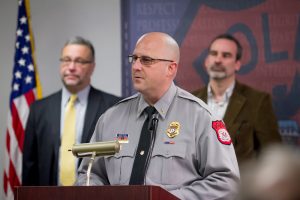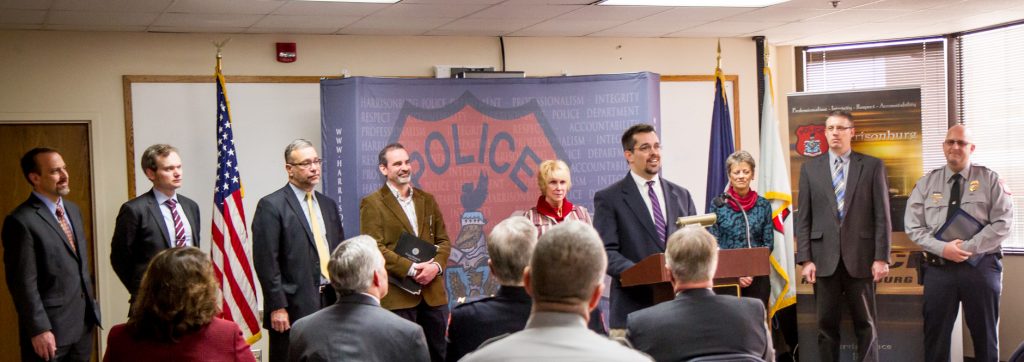More than a dozen police departments from across the country plan to meet in the Shenandoah Valley to discuss restorative justice practices.
The Harrisonburg Police Department (HPD) and Eastern Mennonite University’s Zehr Institute for Restorative Justice will host a weekend retreat at Camp Horizons in November.

“This is the first of its type,” said HPD Lt. Kurt Boshart, who announced the event at City Council’s meeting Tuesday. “We’re fortunate to have it right here in the Harrisonburg area.”
Among the departments planning to attend are ones from Chicago, Kalamazoo, Mich., Davis, Calif., Fairfax and Norfolk.
In March 2015, HPD launched its restorative justice program, which is an alternative to the traditional criminal justice system. Instead of strictly looking to punish an offender, the program’s goal is to address the needs of the victims, offenders and the community at large to resolve a crime.
A mediator, offender and victim discuss the effects of the harm done by the crime and create a resolution. Both the victim and offender must agree to participate.
The city’s program works in collaboration with several groups, including the Fairfield Center, EMU, James Madison University and Harrisonburg City Public Schools.
“We’re really looking at changing a mindset and how we handle criminal justice,” Boshart said.
At the retreat, chiefs and top-ranking officers from the departments will discuss pitfalls, successes and ways to improve restorative justice practices.
Although it has had only about 10 cases, Boshart said HPD is seeing successful outcomes. He pointed to a case involving a JMU student who approached the police department about going through the program.
The man was at a party when he was assaulted by an acquaintance who was intoxicated.
Boshart said the victim said that because he knew the suspect, he didn’t want to bring charges. Instead, he thought there was a better option.
“He said he didn’t want anything done to the offender because he wanted to go through restorative justice,” Boshart said.
The effects of restorative justice, he said, are being seen in the city’s schools, but statistics aren’t available.
“It’s hard to put a number on those situations,” Boshart told council. “It’s really hard to build a statistic on something that’s changing behavior [in a classroom].”
The department’s program has had shortcomings, he said.
Originally, HPD had patrol officers identify cases to be referred to the restorative justice program, but the department is looking to change that.
“Instead of trying to push it from the bottom up, we’re trying to get more of our [department] supervisors involved,” said Boshart, adding they will be looking through reports and referring offenders to restorative justice when appropriate rather than recommending charges.
On Wednesday, 20 HPD supervisors were trained to evaluate reports and pass along those that might qualify.
Councilman Kai Degner expressed concerns about the program’s limited use last month during a Community Criminal Justice Board meeting. He then requested a report from HPD.
Tuesday’s meeting appeared to alleviate those concerns.
Degner said he’s heard of the success stories in the area, but the key, he said at the meeting, is to share those experiences.
“They seem like they are really important to the culture change,” he said.
Boshart agreed, saying word-of-mouth will help bolster the program.
“It’ll transform itself,” he said.

I’m proud of Lt. Boshart of HPD, the Fairfield Center and others who are encouraging this transition to a new way of reducing violent crime. I hope this retreat will help spread the word more widely. Bravo. Anne Nielsen (VAlley Justice Coalition in Harrisonburg)